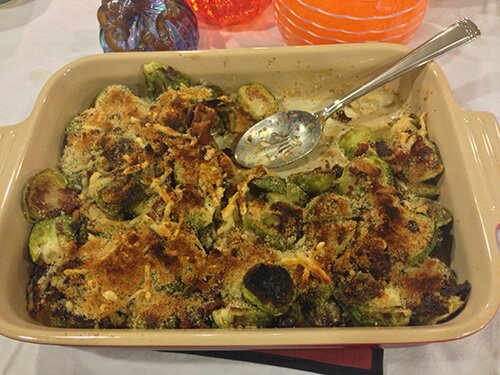Homemade Stock - A General Theory.
One of the longest-lasting artifacts of a home-made Thanksgiving dinner is the turkey stock. After roasting and carving a whole turkey, it feels very efficient to also utilize the neck, bones and other leftover bits to make something, and then use it throughout the year. When successful, the stock is a thick or even gelatinized liquid that adds flavor and a smooth thickness to dishes. We use the turkey stock throughout the year as a replacement for water when making making cous cous, wild rice, or any time chicken stock could be used. There's no strict recipe for stock - it's more of a set of general guidelines. Here's how it's done:
Collect cleaned vegetable trimmings and any vegetables that are about to go bad. Stash them all together in a gallon-size plastic zip bag and store it in a corner of your freezer. You can collect stock ingredients for a few months - more is always better - though we usually only end up doing it during the Thanksgiving effort. Most ingredients are fine, but there are a few things to keep in mind:
Good:
Do keep these things in your stock bag and add them to the stock pot: Carrot skins (washed), beet stalks (the green part), leek trimmings. All left-over meat bits (bones, giblets, necks, et cetera); roast them if you like and you can use any the drippings from the roasting. You many want to break the larger bones into smaller pieces with a large knife to they'll fit better in the pot. It's fine to mix poultry with beef or pork or whatever; or even omit the meat if you're aiming for a vegetarian stock. Don't sweat it of you're missing anything from here.
Bad:
There are a few things to avoid adding to the stock. Kale, spinach, cabbage, Brussels' sprouts, and broccoli will turn too bitter. Beets and tomatoes will turn the stock red in color. Potato peels are too cloudy. Oily fish will be too fishy; most lamb is too fatty, and drained bacon fat is just too fatty. Also avoid salting the stock; it will be too strong if added at the beginning and it's best to season when the stock is already incorporated into the final dish.
Throw all "good" stuff into a stock pot (you'll probably need one which can hold at least 2 gallons). Then add:
- 1 unpeeled onion, root end removed and onion quartered
- 1 whole carrot, quartered
- 1 stalk of celery, quartered
- 4 garlic cloves, whole
- 2 tablespoons of tomato paste
- 1 teaspoon of Thai fish sauce (if you have it)
- 1 cup dry white wine (if you have it)
Add about a gallon of water; enough to cover most of the solid bits. Simmer the pot for a while; a little boiling won't kill the stock, but it can cause cloudier stock, and more impurities to strain / skim off. Check the pot occasionally to make sure the majority of solid parts are covered with liquid; add more water if not. You want to cook the stock for as long as possible - more time equals more concentrated flavor and more deliciousness - but it can be done in just 3 hours (especially if crack the bones).
Strain the solid chunks out of the stock and cool it. For the ultimate cooling mojo: put an empty pot into your sink, and then fill the sink (but not the pot) with ice and some water. Add about a tablespoon of salt to the ice water. Then pour the hot stock into that pot in the sink. Stir the ice-water once in a while. For long term storage, freeze the stock in muffin cups or ice cube trays for easy portioning.
For a professionals take on stock, see Freezer-Bag Quick Stock from Lynne Rossetto Kasper.
Permalink
Tags: cooking recipes





